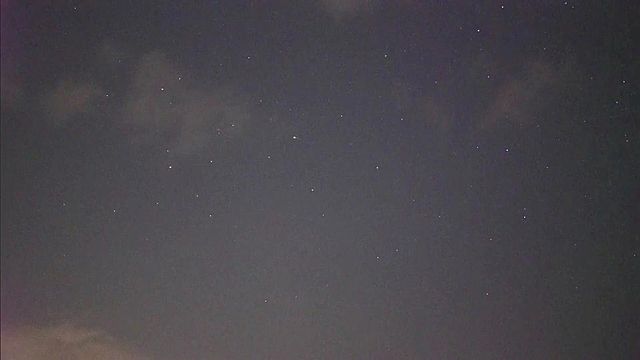Geminid Meteor Shower to create dazzling show this weekend
The Geminid Meteor Shower, the biggest meteor shower of the year, peaks this weekend. Unlike other meteor showers that require getting up in the middle of the night to enjoy, the Geminids are viewable at more family friendly hours. Get the kids outside to experience the sight of asteroid dust burning up in the upper atmosphere.
Posted — UpdatedThe Geminid Meteor Shower, the biggest meteor shower of the year, peaks this weekend. Unlike other meteor showers that require getting up in the middle of the night to enjoy, the Geminids are viewable at more family friendly hours. Get the kids outside to experience the sight of asteroid dust burning up in the upper atmosphere.
That dust was left by the extinct comet 3200 Phaeton on one of its many trips around the sun. Phaeton was originally thought to be an asteroid, but due to the lack of ice, researchers have since concluded that this is likely the result of its orbit so close to the sun.
To see the show, wait until at least astronomical twilight, around 7 p.m., when no traces of sunlight are left in the sky. Look to the darkest part of the sky, away from street or other unshielded light. Plan to be outside for at least 30 minutes and give your eyes 10 minutes or so to adjust to the darkness. An average of 1 meteor per minute is expected this year.
There are also a number of opportunities to experience the Geminids throughout central North Carolina and southern Virginia. Volunteers from the Chapel Hill Astronomical and Observational Society (CHAOS) and the Raleigh Astronomy Club will share telescopic views of deep sky objects along with the meteors. All events are free and open to the public. Check the links on the left for more information and directions.
Jordan Lake, Ebenezer Church Recreation Area
The calendar tells us that the best views will be Sunday night into Monday as Earth passes through the densest part of Phaeton’s dust trail. Math tells us that most meteors will most fill the sky around 2 a.m. Monday morning. The constellation Gemini, where the meteors appear to emanate from, will be at its highest point in the sky. The weather forecast is telling us something else.
Monday’s observing session sponsored by the Morehead Planetarium and Science Center at Jordan Lake’s Ebenezer Church Recreation Area is looking better and better. If the trend continues and the cold front moves through earlier in the day, clouds are expected to break in time for the event beginning at 6 p.m.
Copyright 2024 by Capitol Broadcasting Company. All rights reserved. This material may not be published, broadcast, rewritten or redistributed.





